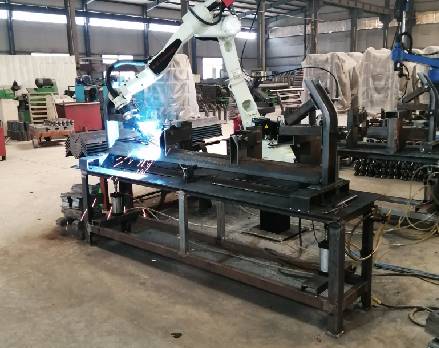 Afrikaans
Afrikaans  Albanian
Albanian  Amharic
Amharic  Arabic
Arabic  Armenian
Armenian  Azerbaijani
Azerbaijani  Basque
Basque  Belarusian
Belarusian  Bengali
Bengali  Bosnian
Bosnian  Bulgarian
Bulgarian  Catalan
Catalan  Cebuano
Cebuano  Corsican
Corsican  Croatian
Croatian  Czech
Czech  Danish
Danish  Dutch
Dutch  English
English  Esperanto
Esperanto  Estonian
Estonian  Finnish
Finnish  French
French  Frisian
Frisian  Galician
Galician  Georgian
Georgian  German
German  Greek
Greek  Gujarati
Gujarati  Haitian Creole
Haitian Creole  hausa
hausa  hawaiian
hawaiian  Hebrew
Hebrew  Hindi
Hindi  Miao
Miao  Hungarian
Hungarian  Icelandic
Icelandic  igbo
igbo  Indonesian
Indonesian  irish
irish  Italian
Italian  Japanese
Japanese  Javanese
Javanese  Kannada
Kannada  kazakh
kazakh  Khmer
Khmer  Rwandese
Rwandese  Korean
Korean  Kurdish
Kurdish  Kyrgyz
Kyrgyz  Lao
Lao  Latin
Latin  Latvian
Latvian  Lithuanian
Lithuanian  Luxembourgish
Luxembourgish  Macedonian
Macedonian  Malgashi
Malgashi  Malay
Malay  Malayalam
Malayalam  Maltese
Maltese  Maori
Maori  Marathi
Marathi  Mongolian
Mongolian  Myanmar
Myanmar  Nepali
Nepali  Norwegian
Norwegian  Norwegian
Norwegian  Occitan
Occitan  Pashto
Pashto  Persian
Persian  Polish
Polish  Portuguese
Portuguese  Punjabi
Punjabi  Romanian
Romanian  Russian
Russian  Samoan
Samoan  Scottish Gaelic
Scottish Gaelic  Serbian
Serbian  Sesotho
Sesotho  Shona
Shona  Sindhi
Sindhi  Sinhala
Sinhala  Slovak
Slovak  Slovenian
Slovenian  Somali
Somali  Spanish
Spanish  Sundanese
Sundanese  Swahili
Swahili  Swedish
Swedish  Tagalog
Tagalog  Tajik
Tajik  Tamil
Tamil  Tatar
Tatar  Telugu
Telugu  Thai
Thai  Turkish
Turkish  Turkmen
Turkmen  Ukrainian
Ukrainian  Urdu
Urdu  Uighur
Uighur  Uzbek
Uzbek  Vietnamese
Vietnamese  Welsh
Welsh  Bantu
Bantu  Yiddish
Yiddish  Yoruba
Yoruba  Zulu
Zulu conveyor bearing housing
Understanding Conveyor Bearing Housing An Essential Component in Material Handling
In the world of industrial equipment, the term conveyor bearing housing refers to a vital component that plays a significant role in the smooth operation of conveyor systems. These systems are crucial for material handling across various industries, including manufacturing, warehousing, and logistics. The conveyor bearing housing serves as a protective and supportive structure for the bearing, which is essential for the rotation of conveyor rollers and other moving parts.
Functionality and Design
The primary function of the conveyor bearing housing is to support the bearing that facilitates the movement of the conveyor belts and rollers. This component is designed to withstand heavy loads, environmental factors, and continuous movement, which can lead to wear and tear. Typically made from durable materials such as cast iron or aluminum, the housing is engineered to provide stability and safety to the conveyor system. It is also designed with precision to ensure a perfect fit for the bearings, which is crucial for minimizing friction and maximizing efficiency.
One of the key aspects of bearing housing is its ability to keep contaminants out while retaining the lubrication necessary for optimal performance. Proper sealing and lubrication are critical as they prevent dust, debris, and moisture from entering the housing, which could damage the bearings and lead to system failure. Regular maintenance of the bearing housing, including checking seals and lubrication levels, is vital in prolonging the life of the conveyor system.
Types of Conveyor Bearing Housings
conveyor bearing housing

There are various types of conveyor bearing housings, each catering to different applications and operational requirements. Some of the most common types include pillow block housings, flange-mounted housings, and take-up housings. Each design has unique features that allow it to be utilized in specific conveyor setups, balancing between ease of installation, maintenance access, and load capacities.
Pillow block housings, for example, provide a versatile and robust solution suitable for high-load applications. Flange-mounted housings are typically used in situations where alignment is critical, while take-up housings are essential for adjusting the tension of the conveyor belt. Each type of housing ensures that the bearings operate efficiently, minimizing downtime and increasing productivity.
Importance in Industrial Operations
The conveyor bearing housing is often overlooked, yet its significance cannot be understated. It directly impacts the efficiency and reliability of conveyor systems. Neglecting the maintenance of this component can lead to operational failures, increased downtime, and costly repairs.
Moreover, in a world where efficiency is paramount, understanding the role of each component in the conveyor system, including the bearing housing, can lead to improved performance and reduced operational costs. Industries that prioritize regular inspection and maintenance of their conveyor bearing housings not only enhance the lifespan of their equipment but also ensure a smoother flow of operations.
In conclusion, the conveyor bearing housing might be a small part of the larger material handling puzzle, but it is certainly a crucial one. By ensuring proper function and maintenance of this component, industries can achieve optimal performance and productivity in their conveyor systems.
-
Revolutionizing Conveyor Reliability with Advanced Rubber Lagging PulleysNewsJul.22,2025
-
Powering Precision and Durability with Expert Manufacturers of Conveyor ComponentsNewsJul.22,2025
-
Optimizing Conveyor Systems with Advanced Conveyor AccessoriesNewsJul.22,2025
-
Maximize Conveyor Efficiency with Quality Conveyor Idler PulleysNewsJul.22,2025
-
Future-Proof Your Conveyor System with High-Performance Polyurethane RollerNewsJul.22,2025
-
Driving Efficiency Forward with Quality Idlers and RollersNewsJul.22,2025





























